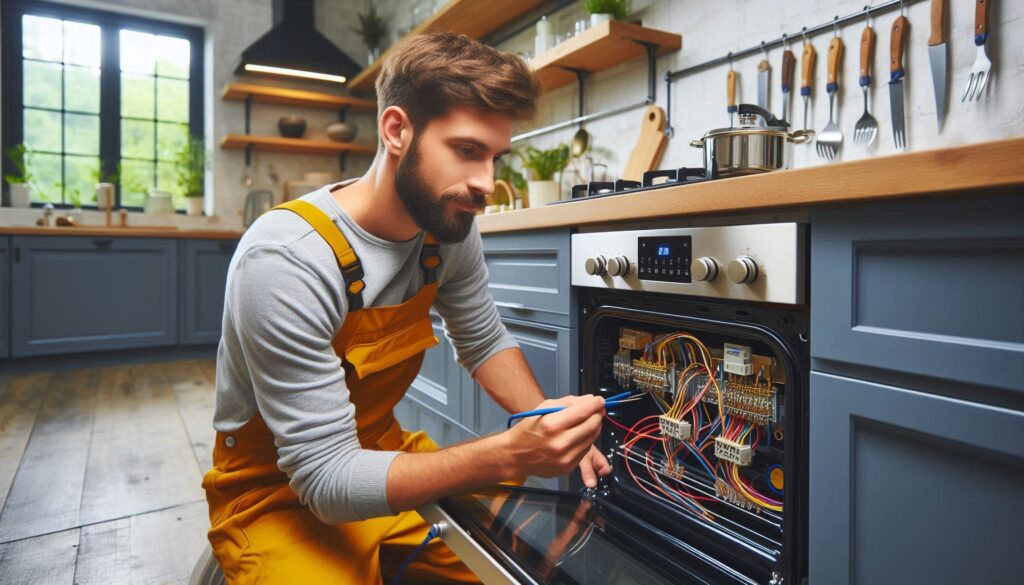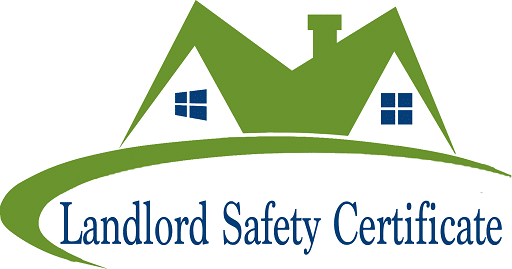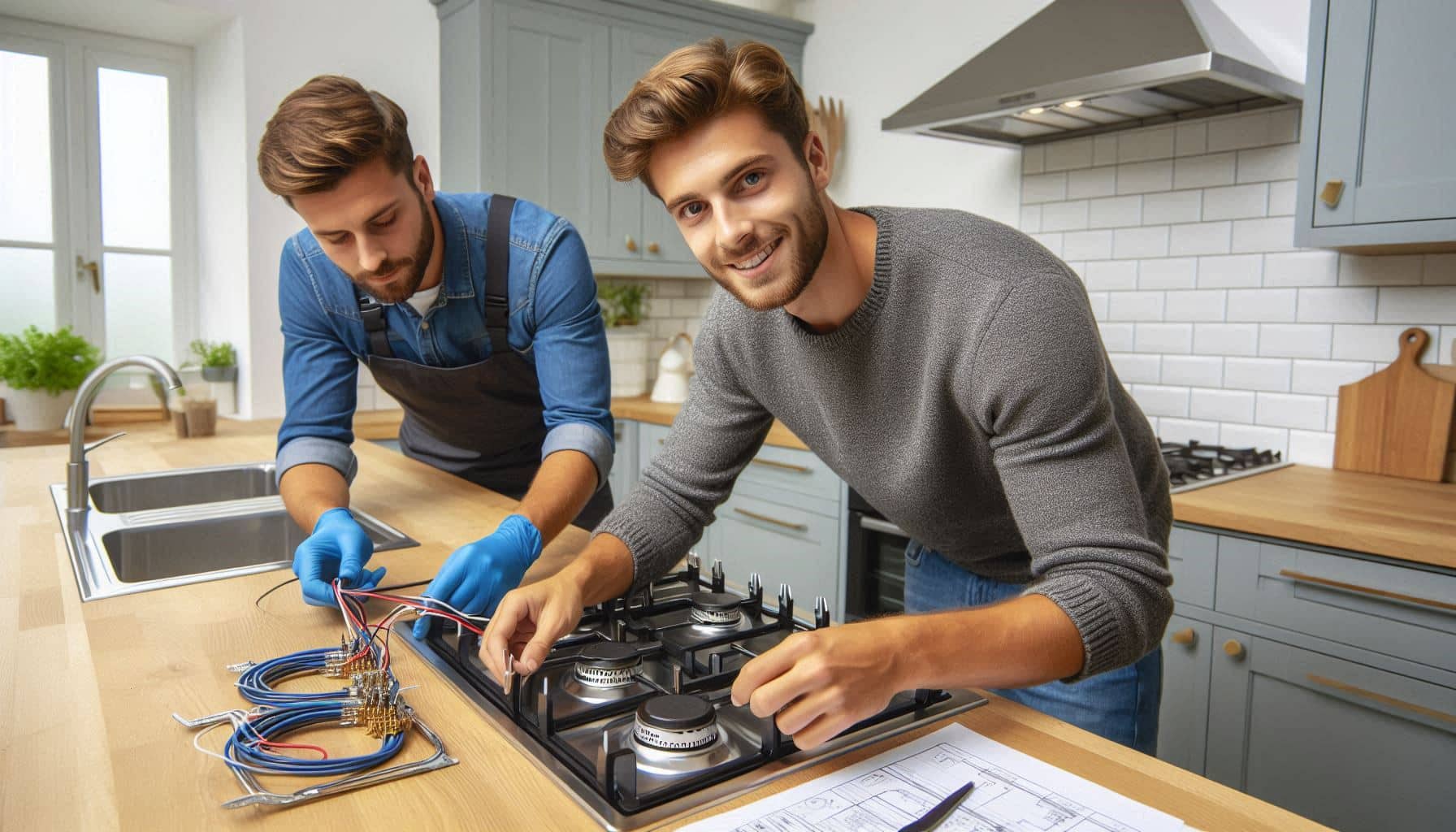
Moving into a new home comes with many responsibilities, and one critical task that often gets overlooked is the safe installation of your cooker. Whether you’re planning to install a gas or electric cooker, prioritising cooker fitting safety is essential to protect both your property and your family. In the UK, the law is strict when it comes to gas appliances, and overlooking the proper procedures can result in serious hazards, costly repairs, and even legal consequences. This guide is designed to offer practical gas cooker installation tips that every new homeowner should follow, ensuring a smooth, safe setup that complies with current regulations.
In a new home, convenience can overshadow safety—but overlooking cooker fitting safety is risky. A poorly installed gas cooker can cause fires, explosions, or carbon monoxide leaks. It may also void your warranty or insurance. With careful planning and professional help, gas cooker installation becomes a safe, stress-free process.
Gas cookers are popular in UK homes but require expert installation. One of the most important gas cooker installation tips is to always hire a Gas Safe registered engineer. Only certified professionals can legally install gas appliances, perform leak checks, and follow all safety standards. Skipping these steps could lead to serious risks.
While electric cookers don’t involve gas, they still require caution. Many need a dedicated 30–45 amp circuit and must be hardwired. Hiring a qualified electrician is essential. Attempting DIY work may cause fires, appliance damage, or injuries—making proper cooker fitting safety vital even for electric units.
Dual-fuel cookers combine a gas hob with an electric oven, meaning you’ll need both a Gas Safe engineer and a qualified electrician. This type of appliance highlights the importance of cooker fitting safety, as mistakes in either gas or electric connections can compromise the entire unit’s safety and functionality.
In the UK, the law is very clear — only registered engineers from the Gas Safe Register are permitted to install gas appliances. Hiring someone unqualified is not just dangerous, it’s illegal. One of the most important gas cooker installation tips is to verify the installer’s credentials directly on the Gas Safe Register website. This step ensures you’re protected from poor workmanship and legal repercussions.
Even if you’re not doing the installation yourself, you must ensure it’s done properly. Homeowners and landlords face penalties if they ignore this. Certified installations and valid Gas Safety Certificates help you stay compliant and protect your tenants and property.

Before installing your cooker, your kitchen must meet basic safety standards.
Gas cookers require excellent ventilation to prevent the build-up of dangerous gases like carbon monoxide. One key cooker fitting safety tip is to keep windows open or install extractor fans near the cooking area. If you’re installing in a small kitchen, ventilation is not optional—it’s vital for your safety.
Ensure there’s at least 30cm clearance between your cooker and any flammable materials such as wood cabinets, curtains, or paper towels. This distance is required under UK building regulations and helps prevent kitchen fires. Cooker fitting safety starts with maintaining these crucial clearances to avoid fire hazards.
Your new cooker must be positioned with ample clearance on both sides and behind it. There should also be sufficient space for air to circulate and to allow doors to open fully. Failing to plan for this could affect your appliance’s efficiency and longevity. These are essential gas cooker installation tips every homeowner should consider before fitting a new appliance.
To keep your home safe, follow these key gas cooker installation tips:
• Hire a Gas Safe Engineer – Only certified pros ensure full compliance.
• Test for Leaks – A gas tightness test must be done after fitting.
• Use the Right Fittings – Always choose proper gas hoses and clamps.
• Check the Flame Failure Device – This cuts gas if the flame goes out.
These simple steps ensure your kitchen stays safe and your cooker runs efficiently.
Electric cookers need proper installation to avoid risk. Focus on cooker fitting safety even when there’s no gas involved.
• Install a Dedicated Circuit – This prevents circuit overload and protects the cooker.
• Hire a Certified Electrician – Only Part P-registered professionals meet UK electrical standards.
• Ensure Load Compatibility – Confirm your fuse box can handle the cooker’s power demand. If not, upgrade it before installation.
After installation, take the time to perform basic post-installation safety checks.
• Request an Installation Certificate: This proves your cooker was installed by a certified professional and may be required for insurance or warranty purposes.
• Test All Functions Thoroughly: Run both the hob and oven, checking for abnormal noises, smells, or flame behaviour.
• Book Annual Servicing: Regular checks ensure continued safety and help prolong the appliance’s lifespan.
Remember, cooker fitting safety doesn’t end once the appliance is connected—it’s an ongoing responsibility.
In London, cooker installation typically costs between £70 and £150. Prices depend on the type of cooker and whether extra work is required, such as new wiring or pipework. Dual-fuel units usually cost more due to needing both a Gas Safe engineer and an electrician. Always ask for a clear quote beforehand.
When it comes to installing a cooker in your new home, there’s no room for shortcuts. Whether you’re dealing with a gas or electric unit, cooker fitting safety must remain your number one priority. By following these gas cooker installation tips, hiring certified professionals, and complying with legal standards, you’re creating a safer, more secure environment for you and your family. Not only will you avoid costly mistakes and fines, but you’ll also gain peace of mind knowing your kitchen is ready for years of safe and enjoyable use.

